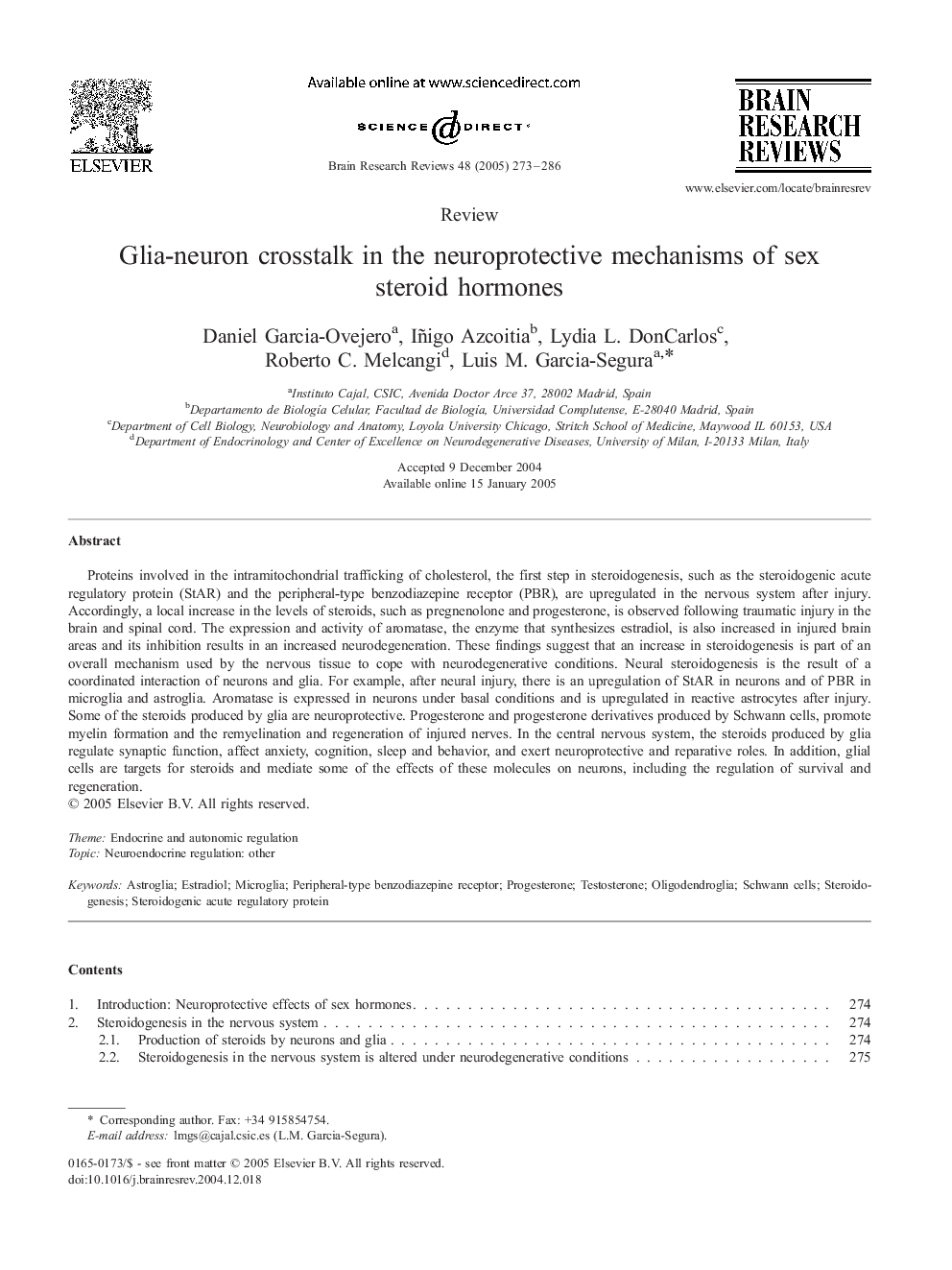| Article ID | Journal | Published Year | Pages | File Type |
|---|---|---|---|---|
| 9423164 | Brain Research Reviews | 2005 | 14 Pages |
Abstract
Proteins involved in the intramitochondrial trafficking of cholesterol, the first step in steroidogenesis, such as the steroidogenic acute regulatory protein (StAR) and the peripheral-type benzodiazepine receptor (PBR), are upregulated in the nervous system after injury. Accordingly, a local increase in the levels of steroids, such as pregnenolone and progesterone, is observed following traumatic injury in the brain and spinal cord. The expression and activity of aromatase, the enzyme that synthesizes estradiol, is also increased in injured brain areas and its inhibition results in an increased neurodegeneration. These findings suggest that an increase in steroidogenesis is part of an overall mechanism used by the nervous tissue to cope with neurodegenerative conditions. Neural steroidogenesis is the result of a coordinated interaction of neurons and glia. For example, after neural injury, there is an upregulation of StAR in neurons and of PBR in microglia and astroglia. Aromatase is expressed in neurons under basal conditions and is upregulated in reactive astrocytes after injury. Some of the steroids produced by glia are neuroprotective. Progesterone and progesterone derivatives produced by Schwann cells, promote myelin formation and the remyelination and regeneration of injured nerves. In the central nervous system, the steroids produced by glia regulate synaptic function, affect anxiety, cognition, sleep and behavior, and exert neuroprotective and reparative roles. In addition, glial cells are targets for steroids and mediate some of the effects of these molecules on neurons, including the regulation of survival and regeneration.
Keywords
Related Topics
Life Sciences
Neuroscience
Neuroscience (General)
Authors
Daniel Garcia-Ovejero, Iñigo Azcoitia, Lydia L. DonCarlos, Roberto C. Melcangi, Luis M. Garcia-Segura,
